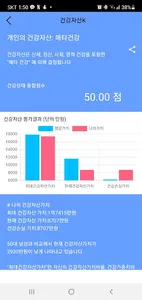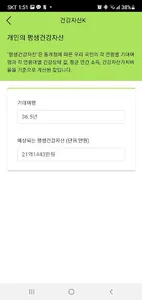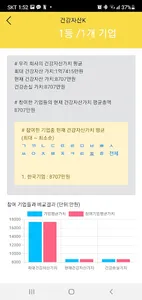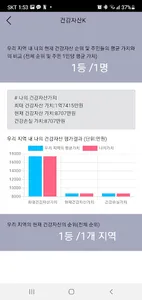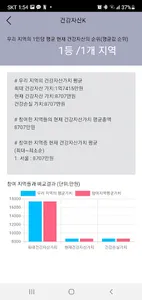Evaluate the value of your health assets using “Health Asset K”. You can also find out the value of the health assets of the company you work for and the area in which you live. It is also possible to evaluate the value of lifelong health assets.
“Health Asset K” is a program created to evaluate the value of health assets of individuals, businesses, and local communities as part of the 'Health 100 Years Conference' campaign to encourage the importance of health and active participation in health care by JoongAng Ilbo S and Deokinwon. .
1. What is a health asset?
“Health assets” are resources that enhance the ability of individuals and groups to maintain health and well-being and help reduce health inequalities. Health assets can be divided into individual health assets and group (corporate, social, national, etc.) health assets. An individual's health assets consist of health habits formed from the past, current health status resulting from them, and health management competency and health behavior patterns that will shape future health. The group's health assets consist of health determinants such as housing and working environment, medical system, and health culture that can affect health.
2. What is health asset value?
“Health asset value” can be divided into current health asset value and future health asset value. The current health asset value can be evaluated by the current health status resulting from the health habits formed from the past, and the future health asset value depends on the scenario in which the current health status will continue, age, health habits, health management competency, and changes in health behavior patterns. It can be evaluated according to three scenarios: a case-of-worse scenario and a case-of-improvement scenario.
3. Health asset valuation
Health asset value can be measured either directly or indirectly. In the direct method, it is possible to calculate the sum of evaluations through direct surveys from individuals, complete surveys on the health assets of individual group members, or sampling of representative groups. The indirect method is a method of estimating an individual or group's health assets by using the already assessed value of the group's health assets and publicly available statistical data.
4. Maximum, current and lost health asset value?
'Maximum health asset value' is based on the assumption that the state of health is the best, that is, assuming that physical, mental, social, spiritual, and general health are all the best health conditions, taking into account the user's annual income and health value ratio information. The value to be calculated. In other words, considering the value of the user's annual income and health loss, it means the maximum health asset value that the user can take.
'Current health asset value' is a value calculated by considering the current health status and the user's annual income and health value ratio information.
‘Loss of health asset value’ is the value obtained by subtracting the current health asset value from the maximum health asset value, and it quantifies the extent to which the user is currently suffering from health damage.
“Health Asset K” is a program created to evaluate the value of health assets of individuals, businesses, and local communities as part of the 'Health 100 Years Conference' campaign to encourage the importance of health and active participation in health care by JoongAng Ilbo S and Deokinwon. .
1. What is a health asset?
“Health assets” are resources that enhance the ability of individuals and groups to maintain health and well-being and help reduce health inequalities. Health assets can be divided into individual health assets and group (corporate, social, national, etc.) health assets. An individual's health assets consist of health habits formed from the past, current health status resulting from them, and health management competency and health behavior patterns that will shape future health. The group's health assets consist of health determinants such as housing and working environment, medical system, and health culture that can affect health.
2. What is health asset value?
“Health asset value” can be divided into current health asset value and future health asset value. The current health asset value can be evaluated by the current health status resulting from the health habits formed from the past, and the future health asset value depends on the scenario in which the current health status will continue, age, health habits, health management competency, and changes in health behavior patterns. It can be evaluated according to three scenarios: a case-of-worse scenario and a case-of-improvement scenario.
3. Health asset valuation
Health asset value can be measured either directly or indirectly. In the direct method, it is possible to calculate the sum of evaluations through direct surveys from individuals, complete surveys on the health assets of individual group members, or sampling of representative groups. The indirect method is a method of estimating an individual or group's health assets by using the already assessed value of the group's health assets and publicly available statistical data.
4. Maximum, current and lost health asset value?
'Maximum health asset value' is based on the assumption that the state of health is the best, that is, assuming that physical, mental, social, spiritual, and general health are all the best health conditions, taking into account the user's annual income and health value ratio information. The value to be calculated. In other words, considering the value of the user's annual income and health loss, it means the maximum health asset value that the user can take.
'Current health asset value' is a value calculated by considering the current health status and the user's annual income and health value ratio information.
‘Loss of health asset value’ is the value obtained by subtracting the current health asset value from the maximum health asset value, and it quantifies the extent to which the user is currently suffering from health damage.
Show More

